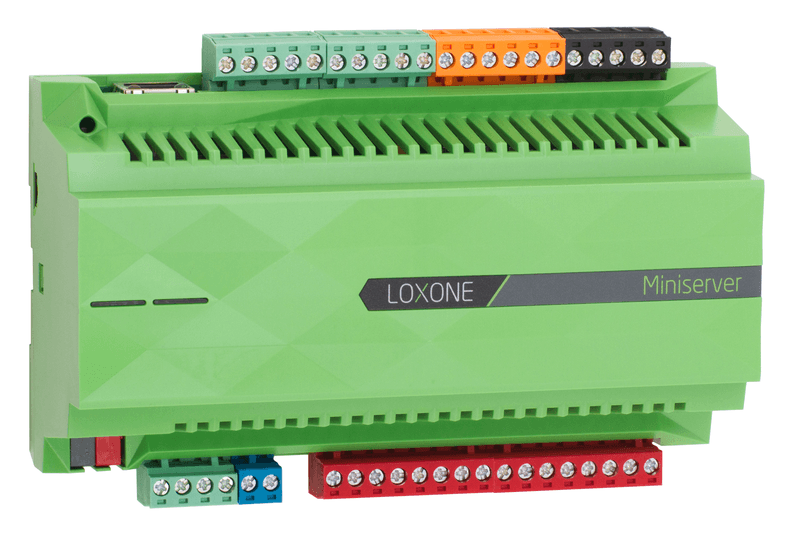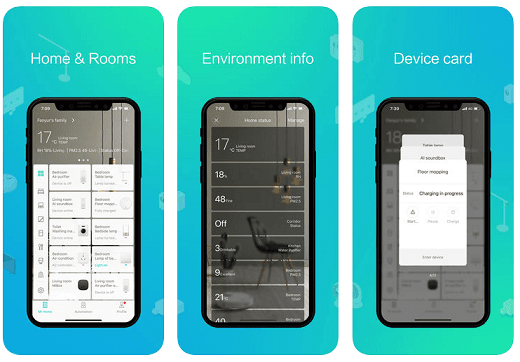We all love comfort and safety, and a smart house gives us exactly what we want to get. According to statistics, more than 50% of users save a lot of time and money thanks to their smart devices, and 75% of them feel more confident. And apps for home automation make the user experience in this respect even more successful, for it’s convenient to have all needed to manage "smart processes" at hand.
In this article, we're going to tell you how to build a home automation system. We’ll unravel a mystery of the successful internet of things development, so to speak, and share our own experience in this area.
Contents:
- Magic Inside the Box: How Smart Home Systems Work
- One-click Management: What Hides Under The Hood
- Security matters: Protection Users’ Privacy
- Best Practices for Smart Home Applications
- Core App Features for Smart Home System
- What Is The Smart Home App Development Cost
- Summary
Magic Inside the Box: How Smart Home Systems Work
Sometimes, given the pace of modern life, there is no one to create for us a comfortable atmosphere into which we'd be happy to plunge upon our return home. However, our great century offers unique solutions for heaps of problems, including this one. And such a solution is the technology of the Internet of things (IoT).
We think you know that IoT means a network of Internet-related objects that can collect, analyze, and share data for further enhancing comfort or making business decisions.
According to Statista, in 2017 the number of devices connected to the Internet exceeded 20 billion units. By 2020, this number will have reached 50 billion, as Cisco predicts. In a few short time, the whole world will become an IoT universe. Agree, this is a rather promising area for the future home technology.
The Internet of Things leads to the concept of a smart home that means a set of solutions for automating everyday activities and getting rid of a monotonous routine. It is always better to delegate different boring and simple duties to someone else, even if this "someone else” is a smart device.
The past and future home technology
It is believed that the IoT history began in 1961 when Lutron Electronics Company Inc. invented a dimmer, a device for adjusting the brightness of light bulbs. Though, some experts guess that the idea of a "smart home" had been implemented in practice by the American companies named X10 USA and Leviton. It happened in 1978 when these brands introduced the technology of controlling household appliances through the power grid.
Anyway, for what it's worth, today everyone can enjoy smart home monitoring & security systems which, as a rule, include:
- a power and lighting system that allows you to handle the light sources inside the house and adjust the amount of incoming natural light by controlling the curtains, blinds, etc;
- climate control, enabling the management of air conditioning and heating;
- access control and security (for example, video surveillance, motion sensors, sensors for closing doors and windows, etc.);
- intelligent control of audio and video systems;
- communication and other engineering systems.
Yes, a mobile monitoring system for the smart home is a dream come true. Just imagine: you go in, close the door, and a miracle occurs: the light comes on, the climate control technology regulates the temperature, and the kettle is boiling in the kitchen… or something else happens, it all depends on your personal preferences. The main thing is that closing the door leads to the trigger of the sensor, due to which your devices begin to create for you comfortable rest conditions.
But this is a fairly standard set, nothing intriguing, there are more interesting examples. The brightest of them is the Xanadu 2.0 estate, owned by Bill Gates. Today it is considered the most perfect smart home in the world.
Xanadu 2.0 is simply amazing, it's beyond imagination! For instance, this smart house welcomes guests when they are just arriving at the estate. The gate will automatically open for them, but only if the number of this car has been entered into Bill Gates's smart home security systems beforehand (micro cameras transmit the image of visitors to the host computer).

Each visitor receives a badge with a microchip which helps the smart house to identify and accompany him (or her) throughout the territory. Moreover, the system learns and memorizes the tastes of guests in order to please them in the future.
Tracking the location of visitors, the smart home creates "heavens" for them: for instance, it automatically turns on the light and organizes a pleasant musical accompaniment. And this list can be continued for a long time!
Xanadu 2.0 also includes smart home security systems that allow the famous billionaire to control the access of guests and service personnel to various parts of the house: the doors open only if a certain person has been authorized to do so.
Impressive, right? But how does a smart house manage to fulfill your desires and why does it require a home automation mobile app? Let's hunt down this question.
What does the home automation system consist of?
- Hub. Well, this is it! Yes, this is the main controller which allows you to interact with all smart devices. Usually, the hub works in conjunction with a smart home app, so the system is easy to manage from the smartphone. However, we will talk about this matter in more detail a little later.
- Sensors. These are devices that receive information about external conditions. There are temperature and humidity sensors, glass breakage sensors, movement sensors, opening doors sensors, detecting leaks sensors, and many others. For instance, Ajax offers a good set of sensors.
- Actuators that directly execute the commands. This is the most numerous group which includes smart switches, smart sockets, smart valves for pipes, sirens, climate controllers and so on.
Before moving on to the smart home app development, let's figure out one more important issue. That is, how do all these elements that we’ve described interact with each other?
In most modern smart homes, the hub communicates with the rest of the system's devices via different signals (such as radio ones). There are several connectivity options, to be exact:
- WiFi, the most popular way to connect smart devices to your gateway.
- pros: it is compatible with almost all existing smart devices and allows controlling them from anywhere if there is a WiFi connection.
- cons: Wi-Fi requires high power and consumes a lot of energy. This can lead to shorter battery life.
- Bluetooth which allows managing home devices directly from users’ phones or tablets that play the role of a gateway.
- pros: a longer battery life thanks to the Bluetooth Low Energy technology. In addition, this is a financially beneficial option.
- cons: the range of Bluetooth is limited enough.
- Z-Wave: in this case, all the elements of the "smart house" communicate with each other on the radio channel using the mesh technology network.
- pros: z-wave is able to interact with 1500 smart objects at once.
- cons: Z-wave devices operate using radio frequencies that depend on the location. Therefore, when you move to another district, problems begin.
- ZigBee is a wireless protocol that is used by Smart Home devices to connect to each other.
- pros: it is compatible with many devices in the modern market (Samsung, Phillips, etc) and available at a price.
- cons: this technology works at a frequency of 2.4 GHz which is similar to Bluetooth and Wi-Fi. Therefore, the more devices you have on the same frequency, the greater the chance of possible local interferences.
And now let's talk about smart home apps and IoT development.
One-click Management: What Hides Under The Hood
We, the people of the 21st century, are quite lazy. In addition, we value every moment of our lives and want that all actions take as little time as possible.
Smart home applications serve for these very purposes. Thanks to the Internet of Things app, a user gets all kinds of notifications wherever he is right now. Also, he can handle his smart devices at a distance: he can turn on the light, operate the air conditioner, switch TV channels, adjust the volume of the audio system or receive a warning about unwelcome guests… even if he is far away at that moment!
Simply put, a home automation app provides users with the ability to control smart devices with one finger touch. Actually, the smartphone becomes a single information and communication center of a smart home.
Some manufacturers (for example, Xiaomi for the Redmi range) often supplement the smartphone with an infrared transmitter. This transmitter allows connecting to the old equipment being controlled by the panel with an infrared signal.
On the other hand, a smartphone (and, accordingly, a smart home app) can interact with modern components of a smart home that are adapted to work with Wifi and Bluetooth connections. For example, Nest, a smart thermostat, uses the information about the user location to determine whether the house owner is inside or outside the building. Depending on this data, the device adjusts the optimal heating mode for the situation. This becomes possible due to the smartphones, for they make the geolocation feature working.
But how to build a home automation system that allows the smart home application to work efficiently with a hub and all devices? Let's figure it out.
The main principle of smart home application development
There are to ways to build a home app:
#1. Using a ready-made solution
This is the simplest and most obvious way of the Internet of Things development. In this case, manufacturers of smart devices provide developers with their API or software development kit (the so-called SDK).
For example, Samsung has its own Smart Home Cloud API which works with its SmartThings. Moreover, Samsung has started cooperating with other companies including D-Link, Honeywell BOSE, Yale, and others. So, soon it will be possible to manage these brands' smart devices with the help of the joint home control app!
Another example of successful brand cooperation is famous Philipps that allows integrating its LED lamps into existing smart home monitoring systems (for example, RWE SmartHome). In this case, these lamps will be switched ON and OFF based on the motion sensors triggering.
This is a great trend beneficial for all parties of the process: simplifying the management of IoT improves the user experience, as a result, people are more willing to buy smart home monitoring systems.
In the meantime, a user has 2 choices: he can limit himself to products of the single brand (this prospect obviously cannot satisfy anybody), or he can manage the devices with the help of several smart home mobile applications, which is very tiring.
#2. Writing the custom system
Also, developers can write a custom SDK, which complicates the IoT development process because requires building a program from scratch. When our team was working on the smart house app, we faced this very task.
The SDK provided by the manufacturer did not work correctly, and our developers had to rewrite this program so that it operated properly and was compatible with all versions of the Android platform. As for the iPhone home automation app, our team had written the SDK we needed from scratch.
Custom smart home application development is more complicated, but it allows you to get a personalized and original solution.
Security matters: Protection Users’ Privacy
The interaction of devices and the smart home monitoring app leads to information abundance, and this data stream coming from the IoT Hub should be stored somewhere. There are two main options:
#1. Cloud storage
This is a very simple and popular way to store data. Its main advantages are:
- The ability to access data from anywhere if the Internet connection is available;
- High probability of data saving even in case of hardware/software failures;
- No need for a user to deal with the purchase, support, and maintenance of his own storage system;
- All data storage procedures are made by the provider of the "cloud" center.
But this method has its drawbacks, namely, the issue of security. Unfortunately, cloud storage makes the data vulnerable to hacking attacks.
Of course, there are ways to protect clients’ information, so the flaw mentioned is no reason to give up on this storage option. By the way, we're are going to pay attention to this issue in our next article by describing ways to take care of users' safety and privacy vulnerabilities, so be sure to follow our blog.
By the by, when developing an Internet of Things app, we’ve used a cloud system to store files and other information (users’ personal data, information about devices, etc.).
We've chosen the Amazon cloud storage which is one of the leaders among server solutions. This service has a huge number of settings and tools that help seeing usage statistics and monitoring downloads. For another thing, Amazon is rightfully considered the most reliable cloud storage which effectively protects the information of its users. However, in order to further secure our client, we used cloud technology only to store public data, personal information is being placed in the database.
But if this method of storing data seems too risky to you, there is one more.
#2. Storing data inside a smart home system
In this case, the data does not leave the limits of the client's smart house and are being stored locally, on the built-in SD card or FTP server.
The Loxone company has chosen this very approach when creating its Loxone Smart Home. It provides a special Loxone Miniserver for processing and storing information. All interactions, including communication with the smartphone, are under the guidance of this single controlling device. The data received during the operation is being stored on its SD card.
This method is certainly safer than the previous one, however, it’s more power-consuming and expensive.

Well, we've discussed the mobile security issue, now let's proceed to the next point, the most interesting one when it comes to home automation apps.
Best Practices for Smart Home Applications
Creating a smart home app is a great way to simplify the user's interaction with smart home systems. Though, in order to achieve this aim, such a program must fully meet users' needs.
There are two main smart home application development options:
- A single-task IoT app. This program allows managing only one specific device, whether it's climate- or lighting control (or something else, it doesn’t matter). The disadvantages of such an approach are obvious: the user will have to install several smart home applications, and this is hardly a cause for elation. However, there are also advantages: it's relatively simple to build a home app of this type, which means that you can make it almost perfect.
- Multitasking applications. As you understand, such a program allows the user to handle all smart home monitoring systems (or, at least, several of them). Given that your task is to improve the user experience, this home control app is preferable to the previous one. But you should find really skilled developers to create it at the proper professional level.
Now we offer you to study examples of successful smart home apps, the real market leaders. Perhaps, they will push you to come up with interesting ideas of your own.
MI Xiaomi

In 2017, Xiaomi had been ranked first as a manufacturer with the maximum number of gadgets in the smart house segment. The home automation mobile app that allows managing this complicated ecosystem is called Mi Home.
The functionality and capabilities of the Mi Home program depend on the available sensors, the selected location, and the smartphone operating system (the iOS version supports a slightly smaller number of smart home devices).
Subsequently, buying new devices for the "smart home", the user can add them to this internet of things app.
Ajax

Ajax is a wonderful example of wireless smart home security systems that help protect your house or office. It is easy to install and synchronize with the IoT app.
As you can see, this program is security-oriented and solves this particular problem. There are also other instances of highly specialized apps for home automation.
eQ-3

eQ-3 Homematic IP offers the ability to monitor the heating mode through a smart home application that allows connecting the radiator thermostats and window sensors to the hub. Synchronized with each other, thermostats automatically reduce the intensity of heating when the window is opened (and vice versa).
A couple of useful tips for IoT development:
- It is desirable that your mobile program should work on all platforms. However, if you have to save money, create a smart home monitoring Android app for a start. Later, you can always build an iPhone home automation app too.
- Again, if you are forced to think about saving money, start by developing an MVP model with limited functionality. In other words, build a home app that will only have the most significant features. In the future, you can add new ones if you want.
- Pay attention to the interface design of your smart home mobile application. It should be user-friendly, intuitive, appealing. Here is an example of a design concept created by our UI/UX expert.
Core App Features for Smart Home System
The main functionality of the smart home monitoring app should include the following features:
- User registration. When it comes to the smart house app, simple registration methods are not suitable (for example, through social networks), because it's about data security. We advise you to ask the user for a name, email address, and phone number. You can also send him a verification code.
- User profile. After registering the user, we must create a profile screen for him. And it is necessary to provide two types of profiles:
- admin (owner) with full rights to manage the mobile monitoring system for smart home;
- a usual user with limited access that the admin has given to him.
- Onboarding process. Dedicate a few screens of the home control app to the introduction - a brief guide explaining users the principle of hub configuration and the connection of smart devices. You can provide this guide with audio and video tips if desired.
- Devices page. This screen contains a list of sensors controlling devices connected to a smart house: thermostat, light, smoke and water sensors, etc.
- Sensor page. Each device should have its own screen with parameters for management and configuration.
- Room selection. This feature allows the user to select a room in the house to control the parameters in a particular space.
- Notifications. This is one of the most important features of the home automation mobile app, thanks to which the user is always aware of what is happening at his house. It means that he should be notified of changes in instrument indicators: smoke, flooding, alarm, etc. In addition, the smart home' owner must be able to set up push notifications in such a way as to know all the recent actions of other users: for example, if somebody has changed the temperature or light.
Now you know how to build a home automation system and what features the IoT app should have in order to satisfy the user... but how much will it cost to develop such a program?
What Is The Smart Home App Development Cost?
The cost of creating a smart home monitoring app depends on the developers' rate and the time it takes to conduct the work required. On average, the smart home app development lasts at least six months (or more).

Of course, this is a very rough estimate with a rate of about $ 35 per hour.
Comfort consists of small things, and a smart house takes care of most of them. This unique system ensures optimal human interaction with living space, and a smart home application simplifies the process even more. That is, an IoT app is a way to make a smart house smarter, and business - more efficient.
And if you are engaged in the production of smart devices or somehow related to the IoT business, you should definitely order the service of the internet of things development.
Let's recap what you should consider while thinking about how to build a home automation system:
- Definition of the development method. Are you ready to provide developers with the SDK or do you want them to create a custom one?
- Choosing the method of data storage.
- Identifying the functionality of the home automation app.
- The search for the company-developer.
The last point is the most crucial, in our opinion, for it depends on the developers whether the created application will work the way you want. And if you need professional assistance, we are happy to help. Our team has practical and actual experience in building smart home apps so we know how to overcome all kinds of pitfalls during the development process. Moreover, we have been working in this market for a long time and we are ready to take up any challenge.


